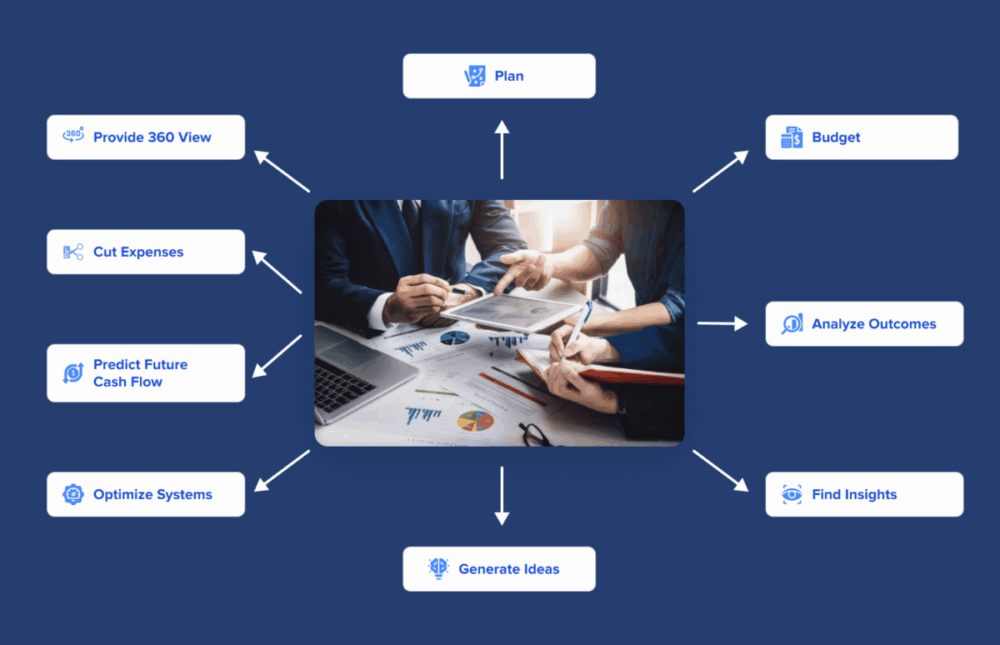Every founder, manager, and leader has faced that moment: you’re excited about growth, new clients are signing on, but the bank balance tells a different story. That tension, between ambition and liquidity is where many promising ventures stumble.
This guide is your roadmap through that tension zone. We’ll unpack how cash flow, disciplined budgeting, and forward-looking financial planning form the three pillars that let you sleep at night and scale in daylight.
You’ll walk away knowing:
- How to track and interpret cash movement (not just profits).
- How to structure your budget so it adapts, not suffocates, your growth.
- How to plan strategically, so financing becomes an amplifier, not a liability.
Here’s how it plays out.
Understanding Cash Flow ─ The True Pulse of Your Business

Let’s cut to the chase: profit doesn’t always mean cash in your pocket. You might be “profitable on paper” but be scrambling to pay suppliers tomorrow. Cash flow is the movement of money in and out of your business over a given period.
You’ll see cash flow categorized as:
- Operating cash flow (CFO): What your core business delivers, after running costs
- Investing cash flow (CFI): Money tied up (or released) in assets, capital expenditures, or acquisitions
- Financing cash flow (CFF): Inflows or outflows tied to debt, equity, and dividends
When incoming cash exceeds outgoing, you’re in a “positive cash flow” zone. When outflows dominate, you’ve got negative cash flow. Even a high-revenue business can be cash-strapped if its operations are illiquid.
Some companies with excellent revenue growth collapse because their receivables pile up, inventory sits unsold, or capital expenditures drain liquidity ahead of revenue catch-up.
Here’s a simple illustration:
| Period | Inflows | Outflows | Net Cash Flow |
| January | €100,000 | €80,000 | +€20,000 |
| February | €80,000 | €95,000 | –€15,000 |
You can be profitable across the two months (revenue > cost), but cash flow matters weekly, not just monthly.
At this stage of growth, hiring a full-time financial leader can feel like overkill. That’s where a Fractional Finance Director comes in – someone who provides expert oversight, sharper budgeting discipline, and reliable cash flow forecasting without the burden of a permanent salary. It’s a way to gain financial clarity and strategic direction while keeping your team lean.
The Mechanics of Budget Management

Source: online.hbs.edu
Having a budget isn’t optional, it’s tactical. But a rigid, unrealistic budget is worse than none at all. The goal is to build a budget that lives, breathes, and adapts.
Foundations of good budgeting
Based on data, not hope: Your past 12–24 months of P&L and cash flow trends are gold. Use that history to forecast growth margins and downside buffers.
Zero-based thinking (on steroids): Question every line item: If this budget period reset to zero, would I genuinely reallocate this cost? Often, once we question subscription fees, underutilized tools, or travel budgets, we find fat to trim.
Flex buffer zones: Leave room, say 5–10% of total expenses, as a discretionary or emergency buffer, so you can respond without wrecking assumptions.
Scenario modeling: Best case, base case, worst case, model each. Knowing how you’re faring against these scenarios allows for nimble pivots when reality deviates.
Common traps (and how to dodge them)
- Budgeting with wishful revenue assumptions (especially in early-stage growth).
- Ignoring seasonality or economic cyclicality.
- Letting cost line items “creep” upward without reassessment.
- Overinvesting in capex early, starving operating liquidity.
When I ran my first startup, we built a “stretch budget” and “defensive budget.” The stretch budget assumed 20% more revenue than the base case, just enough to push growth, but we always tracked ourselves against the defensive side to make sure we didn’t overspend into the downside.
Bridging Cash Flow and Budgeting with Strategic Finance

Source: amplify11.com.au
Once cash flow is stable and budgeting is disciplined, the next step is strategic finance. This is where businesses stop reacting to short-term pressures and start steering capital toward lasting growth.
Working Capital and Structure
Liquidity often hides in the details of receivables, payables, and inventory cycles. Faster invoicing or early payment incentives can bring cash in sooner, while negotiating longer terms with suppliers can buy valuable time.
Alongside this, choosing the right capital structure matters. Debt, equity, or convertible notes each play a role, and the “pecking order theory” suggests using internal funds first, then debt, keeping equity as a last resort when valuations align.
Free Cash Flow and Long-Term Value
Free cash flow — operating cash minus capital expenditures – is the true measure of what you can reinvest, use to pay down debt, or return to shareholders. It’s also the metric investors watch most closely, as it signals both operational health and sustainability. Discounted cash flow modeling builds on this, translating today’s investment into tomorrow’s value and helping you weigh growth bets with clarity.
Ratios and Discipline
Strategic planning also relies on monitoring solvency metrics such as cash flow to debt, with healthy benchmarks typically between 0.2 and 0.5. Regular reviews keep you prepared, resilient, and confident in financial decisions.
Monthly, Quarterly, and Annual Rhythms

Source: dialedinbookkeeping.com
Discipline is in the rhythm. But don’t let reporting become a prison.
- Monthly: Cash flow statement, variance analysis (actual vs budget), liquidity snapshot
- Quarterly: Scenario reforecast, working capital deep dive, key ratio review
- Annually: Strategic plan refresh, capital spending assessment, capital structure review
Did you know? According to studies, poor cash flow management is cited as a key factor in up to 82% of business failures.
Don’t let rhythm become ritual. In every review, always tie back into strategic intent: “Are we walking into a cash shortfall six months out? Are we safe to invest more here? Do we need to adjust expectations?”
Final Thoughts ─ Cash Flows Tell the Real Story
The spreadsheets, forecasts, and metrics aren’t just accounting chores, they’re your organization’s internal compass. If you treat cash flow, budgeting, and strategic finance as a footnote, you’ll end up chasing fires. But place them at the heart of your decision-making, and you’ll operate with confidence, knowing your growth isn’t built on illusion.
One last tip: build humility into your financial planning. The best projections go wrong. What separates durable businesses is responsiveness, not perfect predictions. Stay agile, keep your eyes on the cash, and let your strategy flex when markets shift. That’s how you build something lasting.
Let me know if you want a templated spreadsheet, scenario model, or help customizing this to your business.





















